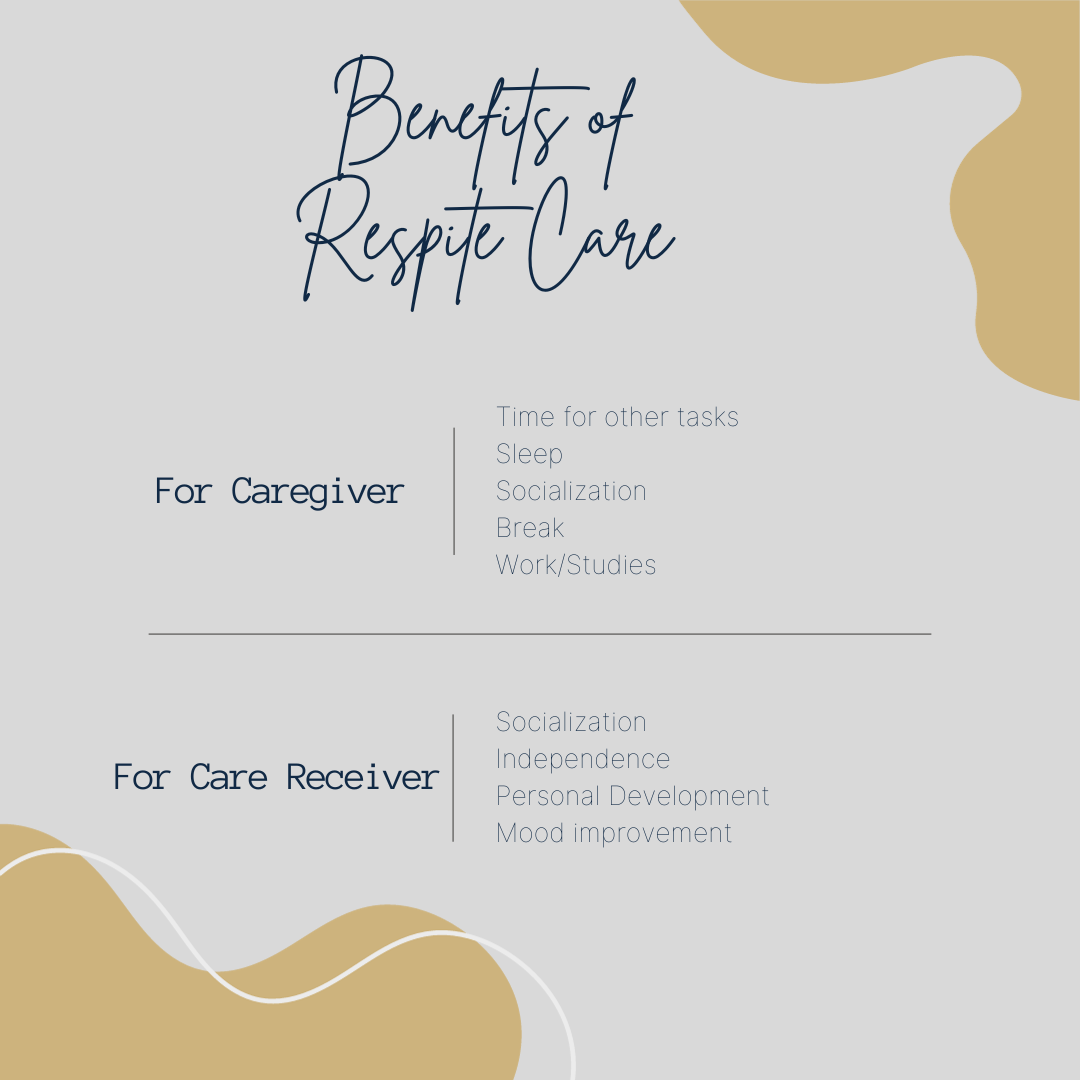What is Respite Care?
What is informal caregiving?
Informal caregiving has become increasingly common in the United States, with about 43.5 million caregivers providing unpaid care in 2015, and 14% of those people caring for a child (Family Caregiver Alliance [FCA], 2016). Caregiving involves assisting another individual with daily tasks, such as housekeeping, dressing, researching care plans or treatment, and even medical tasks. This role can be taken on by various people, but family members often accept the responsibility. Even though many individuals are caregivers for people they love, this does not make it easier by any means. Family caregivers of children under the age of 18 spend about 29.7 hours per week on caregiving tasks (FCA, 2016). Amazingly, about 60% of family caregivers have a part-time or full-time job aside from caregiving, as it offers no salary, evident in the $600 billion value of unpaid caregiving in 2022 (Reinhard et al., 2023). In addition to the financial burden caregiving presents, caregiving has also shown higher levels of depression, anxiety, substance abuse, chronic disease, stress, exhaustion, illnesses, heart disease, and decreased self-care (FCA, 2006). One solution that can be offered to caregivers among increased assessments and interventions of their needs, education and support programs, and financial support, is respite care.
What is respite care?
Respite care is short-term care service provided to a person when their primary caregiver is absent or needs relief and includes the level of supervision and care necessary to ensure the person’s health and safety (Minnesota Department of Human Services [MN DHS], 2023). When caregiving for a child, this may include recreational sports, extracurricular activities, camps, and cultural programs- just to name a few. (MN DHS, 2022). Respite care can offer benefits to both the caregiver and the person being cared for. Respite care gives caregivers the opportunity to rest or sleep, complete other tasks that are sometimes put on the backburner, work or study, interact with friends or family (including other children), and in general just get a break! For the child being cared for it allows them to socialize with someone new, develop independence, self-interests, and even sometimes improve their mood (Welsh et al., 2014). To see if you and your loved one(s) qualify for respite care you can check your state or local policies- such as the Minnesota Department of Human Services website.
Are there other options?
The short answer- yes! Every family and child is different. Some families don’t feel comfortable with others caring for their children and wish to take on the caregiver role by themselves, while some children or adolescents thrive under a completely different roof than their families- like group homes or residential settings.
If you want to continue being a full-time caregiver but are frustrated with that work being unpaid, you may be able to qualify for payments. Some state Medicaid programs and long-term insurance companies allow family members to become paid caregivers. You can contact your state’s Medicaid office or insurance agent to learn more. Waiver funding can also pay parents. First, your child must receive certification of disability. Depending on the type of waiver, disability certifications may come through Social Security, State Medical Review Team, or your doctor. Then you can apply for Medical Assistance (MA) Disability through your county or online. Once you have been approved you can schedule a MN Choice Assessment online or through your county. A MN Choice Assessor will come to your home to evaluate whether your child qualifies for services. After you will receive a written assessment summary from the county and will be assigned a contact person to review and develop a community support plan (Pacer Center, n.d.). This can also determine whether your child qualifies for a personal care assistant (PCA), who would come to your home and help your child with activities of daily living such as grooming, dressing, bathing, transferring, mobility, positioning, eating, and toileting. If you already have a case manager/social worker, talk to them about how you can explore your waiver funding options or PCA options.
Additionally, talk to your provider about any concerns you have being a full-time caregiver, join support groups in-person or online, and lean on other family or friends for help when needed. We want to express that there is no right or wrong answer when it comes to decisions about caring for your child. Doing what’s best for you and your family is what’s most important.
References
Family Caregiver Alliance. (2006). Caregiver health. https://www.caregiver.org/resource/caregiver-health/
Family Caregiver Alliance. (2016). Caregiver statistics: demographics. https://www.caregiver.org/resource/caregiver-statistics-demographics/
Minnesota Department of Human Services. (2023). Respite. https://www.dhs.state.mn.us/main/idcplg?IdcService=GET_DYNAMIC_CONVERSION&RevisionSelectionMethod=LatestReleased&dDocName=ID_002203
Minnesota Department of Human Services. (2022). Children’s mental health respite care services. https://mn.gov/dhs/partners-and-providers/policies-procedures/childrens-mental-health/respite-care/
Pacer Center. (n.d.) Accessing MA, TEFRA and other public support programs. https://www.pacer.org/health/faq/access-ma-tefra.asp#:~:text=How%20do%20I%20apply%20for,be%20eligible%20for%20disability%20services.
Reinhard, S.C., Caldera, S., Houser, A., & Choula, R.B. (2023). Valuing the invaluable 2023 update: Strengthening supports for family caregivers. https://www.aarp.org/ppi/info-2015/valuing-the-invaluable-2015-update.html
Welsh, R., Dyer, S., Evans, D., & Fereday, J. (2014). Identifying benefits and barriers to respite for carers of children with complex health needs: A qualitative study. Contemporary Nurse 48(1). https://doi.org/10.1080/10376178.2014.11081931



